Figurative Sculpture Main Page - Added
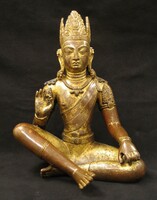
A Figurative Sculpture Main Page has been added and will continue to be worked on and improved with more links and explanations of the various subjects and topics.


A Figurative Sculpture Main Page has been added and will continue to be worked on and improved with more links and explanations of the various subjects and topics.

A Cold Gold & Painted Faces Page has been added. The images are only a selection of examples from the database.
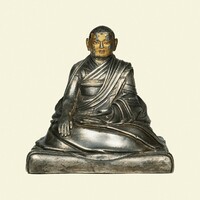
A Karma Gardri Sculpture Style Page has been added. There are more examples known and they will be added to the page when available.
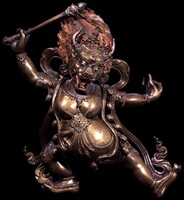
The Sculpture Main Page has been updated with clearer navigation choices and links.
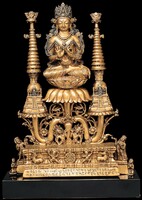
The sculpture included on this page are a small selection of some of the most well known and often published sculptural pieces in museum and private collections around the world. In addition there are many works that should be here but are not yet included in the HAR Database.

Sculpture bases that have legs are found more commonly as an aesthetic feature from North India and Bengal during the Pala and immediate post-Pala period. The four legged pedestal base was revived somewhat during the 17th to 19th century Chinese revival period in which earlier Buddhist sculpture traditions were copied and promoted.
There are many different types of sculptural bases that support a figurative subject. The two most common types of bases are throne shaped and lotus shaped. Sometimes these two are even combined together to form a lotus atop a throne. The throne shape can be ornate and highly decorative with designs and symbolic images or even figures such as the Four Guardian Kings or the animal mounts associated with the Five Buddha Families. The lotus base can be a single lotus with un-ornamented petals or leaves, or highly ornamented. The lotus can be single or double. Some single lotus bases are supported above a stem adorned with foliage and attendant figures. The most elaborate of these are the Lotus Mandala Style with an articulated flower blossom that completely encloses the figurative subject of the work of art. Surrounding the bottom and top of the lotus there is sometimes a ring of small beads imitating the pistil and stamens of the flower.
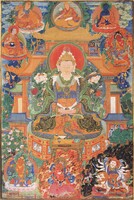
The Sattva & Rajas Painting Collection has been added to the HAR database. Cataloging of the paintings is ongoing.
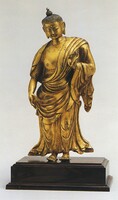
The Sattvas & Rajas Sculpture Collection has been added to the database. Cataloging for this collection is ongoing.
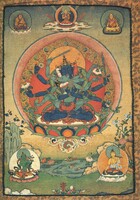
The Akshobhyavajra Page has been updated with additional images of paintings and sculpture.
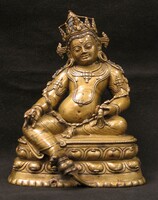
The Yellow Jambhala Page has been updated with additional images of metal sculpture.

The Red Jambhala Page specific to the tradition of Traba Ngonshe has been updated with additional images of painting and sculpture.
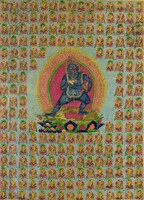
The Black Jambhala Page has been updated with addition images of sculpture and paintings.
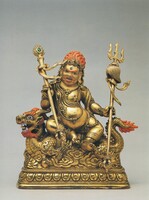
The White Jambhala Page has been updated with additional images. The most unique and striking characteristic of the iconography of White Jambhala is the green dragon that he rides - usually depicted in a Chinese style.
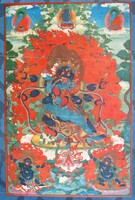
The Mahachakra Vajrapani Page has been updated with additional paintings and sculpture.
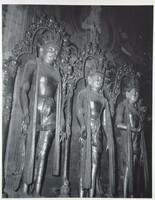
Database search parameters for 'Bodhisattva, Standing' have been added to the system Search. A link is also provided on the Bodhisattva Main Page and titled Standing Sculpture Images.

Database search parameters for Avalokiteshvara Standing have been added to the system Search. A link is also provided on the Avalokiteshvara Standing Main Page and titled All Sculpture Images.
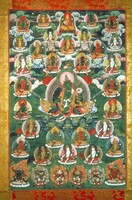
These paintings of Tara surrounded by an additional twenty-one forms are conditionally designated as describing the Sadhana-sammucchaya Tradition. The only reason for this designation is because they do not fit into the Suryagupta system where each form of Tara has a different appearance, colour, numbers of heads, arms, attributes, etc. They also do not fit into the Atisha system where each Tara holds a vase in the extended right hand. They again do not fit into either of the two Nyingma systems where the principal symbolic attribute of the deity is depicted above the flower blossom on the left hand side.
It is very possible that other traditions and systems for describing the Twenty-one Taras will be found or discovered in rare religious texts.
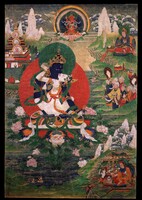
The individual links for the Eight Forms of Padmasambhava on the subject main page have been updated with additional images.

The Tara Main Page has been updated with new navigation, links and images.
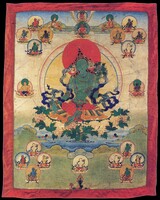
A gallery page for the Twenty-one Taras according to the tradition of Jowo Atisha - in a single composition - has been added to the related Tara pages.